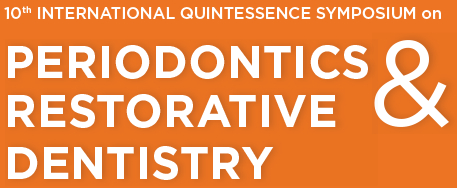LECTURES

This one-hour presentation will encompass many facets of aesthetic and restorative dentistry including: biomaterials selection, operative techniques and principles, diagnostic and communication concepts, the adhesive design concept, functional composite prototyping, periodontal plastic surgical procedures and prosthetic guidelines for treatment of interdisciplinary cases. This presentation will emphasize the significance of using the basic building blocks of restorative and prosthetic dentistry for achieving perioaesthetic excellence. Techniques and materials for each of these topics will be described throughout the presentation as illustrated in Douglas’s new textbook, Esthetic and Restorative Dentistry: Material Selection and Technique.
Learning objectives:
- Examine the preoperative considerations for developing natural aesthetics with composite and ceramic restorations.
- Learn how to select and integrate restorative materials and adhesive protocols with sound fundamental design principles for direct and indirect composite and ceramic restorations.
- Examine the complete process of interdisciplinary treatment.
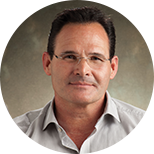
This lecture reviews current knowledge, advances, methods and materials in relation to regenerating tooth supporting tissues lost due to periodontal diseases. Today, marginal periodontitis therapy aims at complete regeneration of lost periodontal tissues (restitutio ad integrum) rather than merely preventing further attachment loss. This presentation is to outline and evaluate past and current concepts of periodontal regeneration and to describe possible future developments concerning periodontal regeneration.

The expectation that anterior dental restorations should be highly aesthetic, durable and minimally invasive is becoming the common expectation among patients who are increasingly well informed. The utilisation of direct composite resin, bonded ceramic restorations or the combination of the 2 restorative options has rapidly become the cornerstone modality in meeting these expectations.
The goal of this presentation is to demonstrate how basic planning and execution of these modalities of treatment can be applied from the simple everyday cases to the more complex and challenging cases. The presentation will highlight the use of modern digital technologies; from digital scanning and planning, milling and 3D printing to simplify and facilitate the delivery of both direct and indirect restorations.
Key restorative concepts for direct resins and ceramics will be highlighted using highly visual images, and videos to ensure that the content is delivered in a manner that is easy to understand and most importantly, applicable in everyday practice.

Mucosal tissue thickness was shown to be the factor having impact on crestal bone stability. Even platform switching of the implant-abutment connection does not reduce crestal bone loss, if soft tissues at the implant placement are thin.
It is suggested that thin tissues might be thickened during implant placement, thus reducing bone resorbtion. The proposals put forward depend on the bone height including (1) bone reduction to passively augment soft tissue proportion, (2) subcrestal placement to achieve greater soft tissue contact or (3) a ‘tent’ technique that involves covering the abutment with the flap to provide soft tissue growth. If bone height is not sufficient, vertical augmentation of the soft tissue is recommended with different materials – autograft, a xenograft or a dermis-derived allograft.
Further, it is important to preserve bone levels after prosthetic treatment.
Recent research has proved that the deeper the position of the margin, the greater amount of residual cement is left undetected. The relation between position of cement excess in the peri-implant sulcus, periodontal status of the patient and severity of peri-implant disease is explained. To avoid cement excess, finished implant restoration with occlusal opening is cemented on titanium base in laboratory and restoration is attached to the implant by an abutment screw. Zirconium as a material is considered the best for peri-implant soft tissues. However, it’s evident that it must be treated in special manner and polished.
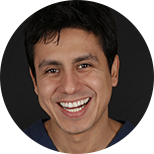
With the popularization of dental implants for single to complex restorations, the importance of treatment planning has been emphasized. We are frequently challenged by malpositioned implants, loss of interdental papillae, soft tissue discoloration, and other problems. The connective zone between the restoration and the soft tissue is one of the most important aspects that will lead to an imperceptible aesthetic oral rehabilitation. This lecture will highlight the treatment planning options for highly challenging and demanding aesthetic cases by using pink ceramics, implants, and/or veneers to improve aesthetic outcomes.
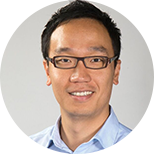
There is no doubt that we are able to achieve excellent treatment outcomes using tried and tested, analog treatment workflows. However, there is the perception that dentistry is “going digital“, and that we will soon all be scanning our patients instead of taking impressions. With the significant time and financial investment required, it is important that we critically assess the outcomes that a digital treatment workflow can provide. This lecture will explore some of the literature relating to accuracy of digital dentistry, as well as provide perspectives from private clinical practice as to the differences between analog and digital treatment workflows.
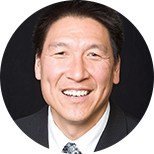
Implant dentistry is continuously evolving offering new and more predictable forms of therapy with minimally invasive protocols. Innovative techniques now allow for better aesthetics, decreased treatment times, and greater patient comfort. However, these new techniques and therapies continue to raise questions and concerns regarding the risk and rewards of each. Specifically, controversial issues regarding immediate extraction socket implant placement in relationship to survival and aesthetic outcomes. Immediate provisional restoration of immediate implants placed into anterior sites will be presented.
This lecture will address current concepts in the treatment of Type 1, 2, and 3 sockets, techniques, clinical research, histologic evidence, and innovations in immediate implant placement and provisional restoration and how they can enhance treatment procedures, time, and clinical outcomes for greater patient comfort, care, and satisfaction.
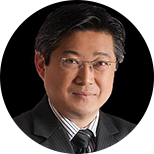
The Objetive of this lecture is to Optimize aesthetics and function with rehabilitations using natural morphologies. The SKIN (Cllones) technique involves the most advanced CAD/CAM technologies, extracting the maximum of precision, quality and speed, in obtaining ceramic restorations. It permits greater predictability of results and reduction of important clinical and laboratory steps, dispensing wax-up for diagnostic and mockups. The SKIN allows an unlimited creation of smiles through the numerous dental compositions.
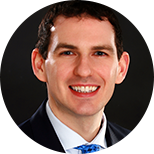
Erosive Tooth Wear is on the increase and increasingly minimally invasive strategies are being proposed to ensure that treatment is as precise and tailored as possible. However, the evidence base for oral rehabilitation of advanced tooth wear cases supports the use of conventional restorations for maximum longevity and novel metal free CAD/CAM materials remain untested in long term follow-up studies. This lecture will outline how the optimal use of digital technologies has opened up novel strategies for screening, diagnosis and management of tooth with a focus on preservation of as much tooth structure as possible and the longevity of the proposed restorations. The audience will be updated on the latest science on the prevention and management of tooth wear with discussion of case examples.
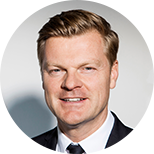
After tooth extraction the alveolar ridge undergoes changes in structure und volume. This creates the need for augmentation of hard and soft tissue if an immediate-delayed approach is chosen. Concepts of immediate implant placement in fresh extraction sockets carry the risk of mid-facial soft-tissue recessions.
The lecture will present contemporary concepts for immediate implant placement that yield in preserving the peri-implant hard and soft tissues with a specific approach. Substitutes for hard and soft tissues enable the clinician to replace failing teeth in the aesthetic zone with fast and efficient approach that is minimally invasive, also for aesthetically demanding patients.
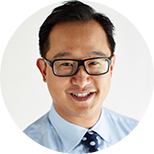
In this modern age we have a plethora of options to rehabilitate broken down dentitions. In this presentation the concepts of additive dentistry with both direct and indirect restorative materials will be shared, with a detailed outline of the latest in materials and techniques to restore teeth predictably. Historical concepts of conventional crown and bridge dentistry have morphed into more conservative and adhesive approaches to solve complex dental problems. Multiple patient cases will be shared to allow an understanding of both material requirements and procedural techniques to deliver successful and aesthetic outcome

Restoration of large defects in the posterior region with a direct composite restoration is possible, although this is not an easy task for the dentist. The practitioner has to pay attention to the ‘hidden quality’ of the restoration by preparing a qualitative good cavity prep, as this will increase the durability of the restoration. The most difficult steps in the fabrication of a large direct posterior composite restoration are: creating a correct form with good occlusal anatomy and well-formed proximal surfaces with strong good positioned contact points. One or two posterior teeth in in a quadrant restored in this way, can function quite well in the medium term (± 5 years). Bruxism and high caries risk seriously decrease the durability of these restorations. The most durable, minimal invasive restoration of posterior teeth with large defects is an indirect lithium disilicate partial bonded restoration (onlay, partial crown).
During this lecture, the new concepts of indirect partial bonded restorations in the posterior region will be discussed going from indications – preparation – immediate dentin sealing/dentin margin elevation and cementation.
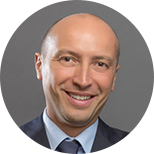
This presentation will critically review the latest improvements in dental bonding systems. Chemical background and physical characteristics of the adhesives will be assayed to understand the clinical capabilities and the role of the clinician to obtain the highest bonding performances, in terms of improved bond strength, extended durability and reduced post-op sensitivity. The lecture will also clarify the mechanisms that affect the stability of the adhesive interface over time, analyzing the role of different degrading phenomena synergistically contributing to degrade the hybrid layer.
The lecture will provide clinical step-by-step procedures along with “tips and tricks” to achieve the highest clinical success in terms of aesthetic requirements, biomechanical properties of adhesive restorations, bond strength and stability of the adhesive interface over time.
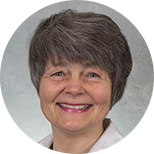
Novel technology and superfast computers are nowadays enabling exploration of the “oral microbiome,” namely the collective population in the oral cavity of bacteria, virus, fungi, and archaea that also has been referred to as the “oral microflora” or “oral microbiota.” Over 700 bacterial species — possibly as many as 1,000 — reside in the mouth, but identification of more than half is lacking and even less is known about their function. This presentation will provide an overview of the scientific evidence for characteristics of the oral microbiome, including its constantly changing composition and abundance; its diversity within the oral cavity; and its importance relative to the total human microbiome. Finally, mechanisms used when oral microbes travel within their host (domestic travel) and from one person to another (international travel) will be described conceptually.
